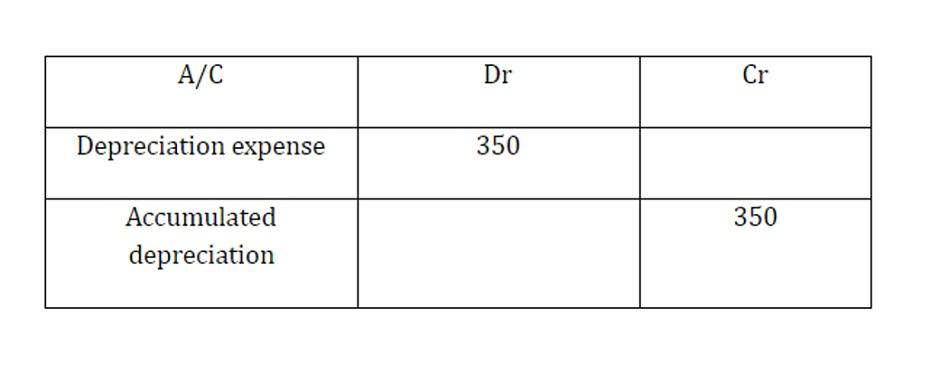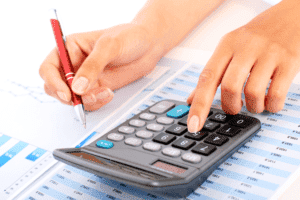It’s just an estimate since your business may be able to continue using an asset past its useful life without incident. The Internal Revenue Service (IRS) uses a proprietary depreciation method called the Modified Accelerated Cost Recovery System (MACRS), which does not incorporate salvage values. Salvage value is the monetary value obtained for a fixed or long-term asset at the end of its useful life, minus depreciation.
Using Salvage Value to Determine Depreciation
The useful life assumption estimates the number of years an asset is expected to remain productive and generate revenue. Depreciation measures an asset’s gradual loss of value over its useful life, measuring how much of the asset’s initial value has eroded over time. For tax purposes, depreciation is an important measurement because it is frequently tax-deductible, and major corporations use it to the fullest extent each year when determining tax liability. Some assets are truly worthless when they’re no longer of use to your business. If there’s no resale market for your asset, it likely has a zero salvage value. Say you’ve estimated your 2020 Hyundai Elantra to have a five-year useful life, the standard for cars.
Depreciation and Salvage Value Assumptions
Next, the annual depreciation can be calculated by subtracting the residual value from the PP&E purchase price and dividing that amount by the useful life assumption. Salvage value can sometimes be merely a best-guess estimate, or it may be specifically determined by a tax or regulatory agency, such as the Internal Revenue Service (IRS). The salvage value is used to calculate year-to-year depreciation amounts on tangible assets and the corresponding tax deductions that a company is allowed to take for the depreciation of such assets. When this happens, a loss will eventually be recorded when the assets are eventually dispositioned at the end of their useful lives. Auditors should examine salvage value levels as part of their year-end audit procedures relating to fixed assets, to see if they are reasonable. If it is too difficult to determine a salvage value, or if the salvage value is expected to be minimal, then it is not necessary to include a salvage value in depreciation calculations.
How Small Business Accountants Use Salvage Value
An asset’s salvage value is the estimated amount the fixed asset can be sold for once its useful life is finished. This value affects the amount of depreciation reported each year during the asset’s life. The higher the salvage value of the asset, the less depreciation https://www.online-accounting.net/ is deducted each year, which results in higher profits. Estimating too high of a salvage value can be deemed a fraudulent accounting practice since profits are then artificially inflated. Because of this, it’s always safer to estimate a more conservative salvage value.
Find similar assets in the marketplace
Companies can also get an appraisal of the asset by reaching out to an independent, third-party appraiser. This method involves obtaining an independent report of the asset’s value at the end of its useful life. This may also be done by using industry-specific data to estimate the asset’s value.
You paid $10,000 for the fridge, $1,000 in sales tax, and $500 for installation. If you’re unsure of your asset’s useful life for book purposes, you can’t go wrong following the useful lives laid out in the IRS Publication 946 Chapter Four. Depreciation allows you to recover the cost of an asset by deducting a portion of the cost every year until it is recovered. Depreciable assets are used in the production of goods or services, such as equipment, computers, vehicles, or furniture, and decrease in resellable value over time. The difference between the asset purchase price and the salvage (residual) value is the total depreciable amount. Starting from the original cost of purchase, we must deduct the product of the annual depreciation expense and the number of years.
The value of the asset is recorded on a company’s balance sheet, while the depreciation expense is recorded on its income statement. Most businesses opt for the straight-line method, which recognizes a uniform depreciation expense over the asset’s useful life. However, you may choose a depreciation method that roughly matches how the item loses value over time. One of the first things you should do after purchasing a depreciable asset is to create a depreciation schedule.
The Ascent is a Motley Fool service that rates and reviews essential products for your everyday money matters. You can still calculate depreciation without a salvage value; just put a $0 in any place where you need to enter a salvage value. Other commonly used names for salvage value are “disposal value,” “residual value,” and “scrap value.” Net salvage value is salvage value minus any removal costs.
The depreciation journal entry accounts are the same every time — a debit to depreciation expense and a credit to accumulated depreciation. For example, the double-declining balance method suits new cars well since they tend to lose a significant amount https://www.online-accounting.net/income-summary-account-definition-and-explanation/ of value in the first couple of years. Unlike the other methods, the double-declining balance method doesn’t use salvage value in its calculation. Say you own a chocolate business that bought an industrial refrigerator to store all of your sweet treats.
Salvage value is the estimated value of an asset at the end of its useful life. It represents the amount that a company could sell the asset for after it has been fully depreciated. On the other hand, book value is the value of an asset as it appears on a company’s balance sheet. It is calculated by subtracting accumulated examples of straight-line amortization depreciation from the asset’s original cost. If your client’s businesses have any fixed assets, determining the salvage value of those assets is important later when calculating depreciation. Though there is no precise formula for calculating an asset’s salvage value, two methods are commonly used in practice.
- The matching principle is an accrual accounting concept that requires a company to recognize expense in the same period as the related revenues are earned.
- It is based on the value a company expects to receive from the sale of the asset at the end of its useful life.
- In other contexts, residual value is the value of the asset at the end of its life less costs to dispose of the asset.
- The beginning balance of the PP&E is $1 million in Year 1, which is subsequently reduced by $160k each period until the end of Year 5.
- If a company wants to front load depreciation expenses, it can use an accelerated depreciation method that deducts more depreciation expenses upfront.
- When salvage value changes, it may cause a change in the amount of depreciation expense you can deduct.
The more commonly used approach is to simply estimate the salvage value to be zero. This is safer and more conservative in accounting practices so potential auditing issues don’t arise in the future. The Internal Revenue Service (IRS) requires companies to estimate a “reasonable” salvage value. The value depends on how long the company expects to use the asset and how hard the asset is used.
The salvage value is used to determine annual depreciation in the accounting records, and the salvage value is used to calculate depreciation expense on the tax return. ABC Company buys an asset for $100,000, and estimates that its salvage value will be $10,000 in five years, when it plans to dispose of the asset. This means that ABC will depreciate $90,000 of the asset cost over five years, leaving $10,000 of the cost remaining at the end of that time. ABC expects to then sell the asset for $10,000, which will eliminate the asset from ABC’s accounting records. Accountants use several methods to depreciate assets, including the straight-line basis, declining balance method, and units of production method. Each method uses a different calculation to assign a dollar value to an asset’s depreciation during an accounting year.
The estimated salvage value is deducted from the cost of the asset to determine the total depreciable amount of an asset. Get instant access to video lessons taught by experienced investment bankers. Learn financial statement modeling, DCF, M&A, LBO, Comps and Excel shortcuts. Salvage value is a commonly used, if not often discussed, method of determining the value of an item or a company as a whole. Investors use salvage value to determine the fair price of an object, while business owners and tax preparers use it to deduct from their yearly tax liabilities.
You want your accounting records to reflect the true status of your business’s finances, so don’t wait until tax season to start thinking about depreciation. The Financial Accounting Standards Board (FASB) recommends using “level one” inputs to find the fair value of an asset. In other words, the best place to find an asset’s market value is where similar goods are sold, or where you can get the best price for it. When you’re using straight-line depreciation, you can set up a recurring journal entry in your accounting software so you don’t have to go in and manually prepare one every time. The money I get back on my old phone is known as its salvage value, or its worth when I’m done using it. Sometimes, an asset will have no salvage value at the end of its life, but the good news is that it can be depreciated without one.

